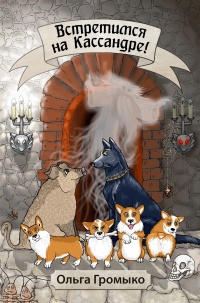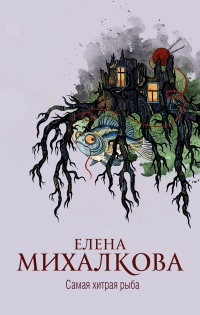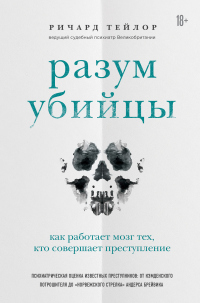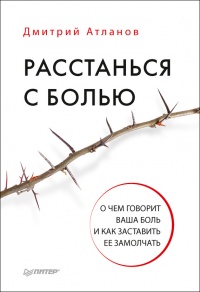Ознакомительная версия. Доступно 13 страниц из 65
trauma in the early life of social work and business students. Journal of Social Work Education, 29(2), 171–180.
8. Taylor, S. E., Klein, L. C., Lewis, B. P., Gruenewald, T. L., Gurung, R. A., & Updegraff, J. A. (2000). Biobehavioral responses to stress in females: tend-and-befriend, not fight-or-flight. Psychological Review, 107(3), 411.
9. Raemen, L., Luyckx, K., Palmeroni, N., Verschueren, M., Gandhi, A., Grobler, A., & Claes, L. (2021). Trauma and self-harming behaviors in high school students: The mediating role of identity formation. Journal of Adolescence, 92, 20–29.
3. Травмированный человек в мире
1. Van der Kolk, B. A. (2003). The neurobiology of childhood trauma and abuse. Child and Adolescent Psychiatric Clinics, 12(2), 293–317.
2. Спасибо, Алистер.
3. Perry, B. D. (2001). Bonding and attachment in maltreated children. The Child Trauma Center, 3, 1-17.
4. Levy, K. N., Blatt, S. J., & Shaver, P. R. (1998). Attachment styles and parental representations. Journal of Personality and Social Psychology, 74(2), 407.
5. Сложный травмированный человек
1. Ombudsman, V. (2019). OPCAT in Victoria: A thematic investigation of practices related to solitary confinement of children and young people.
2. Cauffman, E. (2008). Understanding the female offender. The Future of Children, 18(2), 119–142.
6. Почему люди причиняют вред
1. Coid, J., Yang, M., Ullrich, S., Roberts, A., & Hare, R. D. (2009). Prevalence and correlates of psychopathic traits in the household population of Great Britain. International Journal of Law and Psychiatry, 32(2), 65–73.
2. Mitra P, Fluyau D. Narcissistic Personality Disorder. [Updated 2021 May 18]. In: StatPearls [Internet]. Treasure Island (FL): StatPearls Publishing, 2021 Jan. Available from: https://www.ncbi.nlm.nih.gov/books/ NBK556001/
3. McEwan, T. E., MacKenzie, R. D., & McCarthy, J. (2013). The Problem Behaviour Program: Threat assessment and management in a community forensic mental health context. International handbook of threat assessment, 360–374.
4. Fava, G. A., & Sonino, N. (2007). The biopsychosocial model thirty years later. Psychotherapy and Psychosomatics, 77(1), 1.
5. Tetlock, P. E. (1985). Accountability: A social check on the fundamental attribution error. Social Psychology Quarterly, 227–236.
6. Kuzelova, H., Ptacek, R., & Macek, M. (2010). The serotonin transporter gene (5-HTT) variant and psychiatric disorders: review of current literature. Neuroendocrinology Letters 31(1), 4-10.
7. Day, A., Vlais, R., Chung, D., & Green, D. (2018). Standards of practice in domestic and family violence behaviour change programs in Australia and New Zealand. Australian and New Zealand Journal of Family Therapy, 39(4), 501–513.
8. Herman, K., Rotunda, R., Williamson, G., & Vodanovich, S. (2014). Outcomes from a Duluth model batterer intervention program at completion and long term follow-up. Journal of Offender Rehabilitation, 53(1), 1-18. Snead, A. L., Bennett, V. E., & Babcock, J. C. (2018). Treatments that work for intimate partner violence: Beyond the Duluth Model. In New Frontiers in Offender Treatment (pp. 269–285). Springer, Cham.
Dutton, D. G., & Corvo, K. (2006). Transforming a flawed policy: A call to revive psychology and science in domestic violence research and practice. Aggression and Violent Behavior, 11(5), 457–483.
9. Napier, S., Dowling, C., Morgan, A., & Talbot, D. (2018). What impact do public sex offender registries have on community safety? Trends and Issues in Crime and Criminal Justice, 550,1-20.
10. Yim, I. S., & Kofman, Y. B. (2019). The psychobiology of stress and intimate partner violence. Psychoneuroendocrinology, 105, 9-24.
7. Как выявить опасного человека
1. Australian Bureau of Statistics. (2021). Sexual Violence – Victimisation. Report, Canberra, ACT.
2. Australian Institute of Health and Welfare. (2018). Family, domestic and sexual violence in Australia 2018. Cat. no. FDV 2. Canberra: AIHW.
3. Bryant W & Bricknell S. (2017). Homicide in Australia 2012-13 to 2013-14: National Homicide Monitoring Program Report. Canberra: AIC.
4. https://www.anrows.org.au/media-releases/young-australians-confused-about-consent-and-control-in-the-age-of-tinder-and-snapchat/
5. Galletly, C. A. (2004). Crossing professional boundaries in medicine: the slippery slope to patient sexual exploitation. Medical Journal of Australia, 181(7), 380–383.
6. https://www.abs.gov.au/media-centre/media-releases/36-million-people-experienced-partner-emotional-abuse
9. Травма и политика
1. Dutton, D. G., & Corvo, K. (2007). The Duluth model: A data-impervious paradigm and a failed strategy. Aggression and Violent Behavior, 12(6), 658–667.
2. McEwan, T. E., Shea, D. E., Nazarewicz, J., & Senkans, S. (2017). Reassessing the link between stalking and intimate partner abuse. Partner Abuse, 8(3), 223–250.
3. Drijber, B. C., Reijnders, U. J., & Ceelen, M. (2013). Male victims of domestic violence. Journal of Family Violence, 28(2), 173–178.
4. Badour, C. L., Blonigen, D. M., Boden, M. T., Feldner, M. T., & Bonn-Miller, M. O. (2012). A longitudinal test of the bi-directional relations between avoidance coping and PTSD severity during and after PTSD treatment. Behaviour Research and Therару, 50(10), 610–616.
5. Johnson, M. P. (1995). Patriarchal terrorism and common couple violence: Two forms of violence against women. Journal of Marriage and the Family, 283–294.
6. http://rcfv.archive.royalcommission.vic.gov.au/MediaLibraries/ RCFamilyViolence/Statements/WIT-0064-001-0001-Ogloff-9_1.pdf
7. Testa, M., Hoffman, J. H., & Leonard, K. E. (2011). Female intimate partner violence perpetration: Stability and predictors of mutual and nonmutual aggression across the first year of college. Aggressive Behavior, 37(4), 362–373. Graham-Kevan, N., & Archer, J. (2009). Control tactics and partner violence in heterosexual relationships. Evolution and Human Behavior, 30(6), 445–452.
Daff, E. S., McEwan, T. E., & Luebbers, S. (2021). Australian adolescents’ experiences of aggression and abuse by intimate partners. Journal of Interpersonal Violence, 36(9-10), NP5586-NP5609.
8. Langhinrichsen-Rohling, J. (2010). Controversies involving gender and intimate partner violence in the United States. Sex Roles, 62(3), 179–193.
9. Boxall, H., Doherty, L., Lawler, S., Franks, C., & Bricknell, S. (2022). The «Pathways to intimate partner homicide» project: Key stages and events in male-perpetrated intimate partner homicide in Australia (Research report, 04/2022). ANROWS.
10. Australia’s National Research Organisation for Women’s Safety. (2022). Pathways to intimate partner homicide: The «fixated threat» offender trajectory [Fact sheet]. ANROWS.
11. В исследовании Австралийского криминологического института описана типология агрессоров: «Агрессоры с “фиксированной угрозой” составили треть всех людей, прибегавших к насилию в интимных отношениях (33 %, n=59). Несмотря на ревность, стремление все контролировать и абьюзивность, агрессоры этого типа были относительно функциональными в других сферах жизни. Во многих случаях это были мужчины из среднего класса, уважаемые в обществе и редко контактирующие с системой уголовного правосудия. Их абьюзивное поведение часто принимало форму контроля, сталкинга и наблюдения и усугублялось, если жертва начинала отстраняться от отношений (сепарироваться). Среди агрессоров этого типа насилие по отношению к интимному партнеру было способом вернуть контроль над жертвой или установить его в тех сферах, в которых он, предположительно,
Ознакомительная версия. Доступно 13 страниц из 65
























